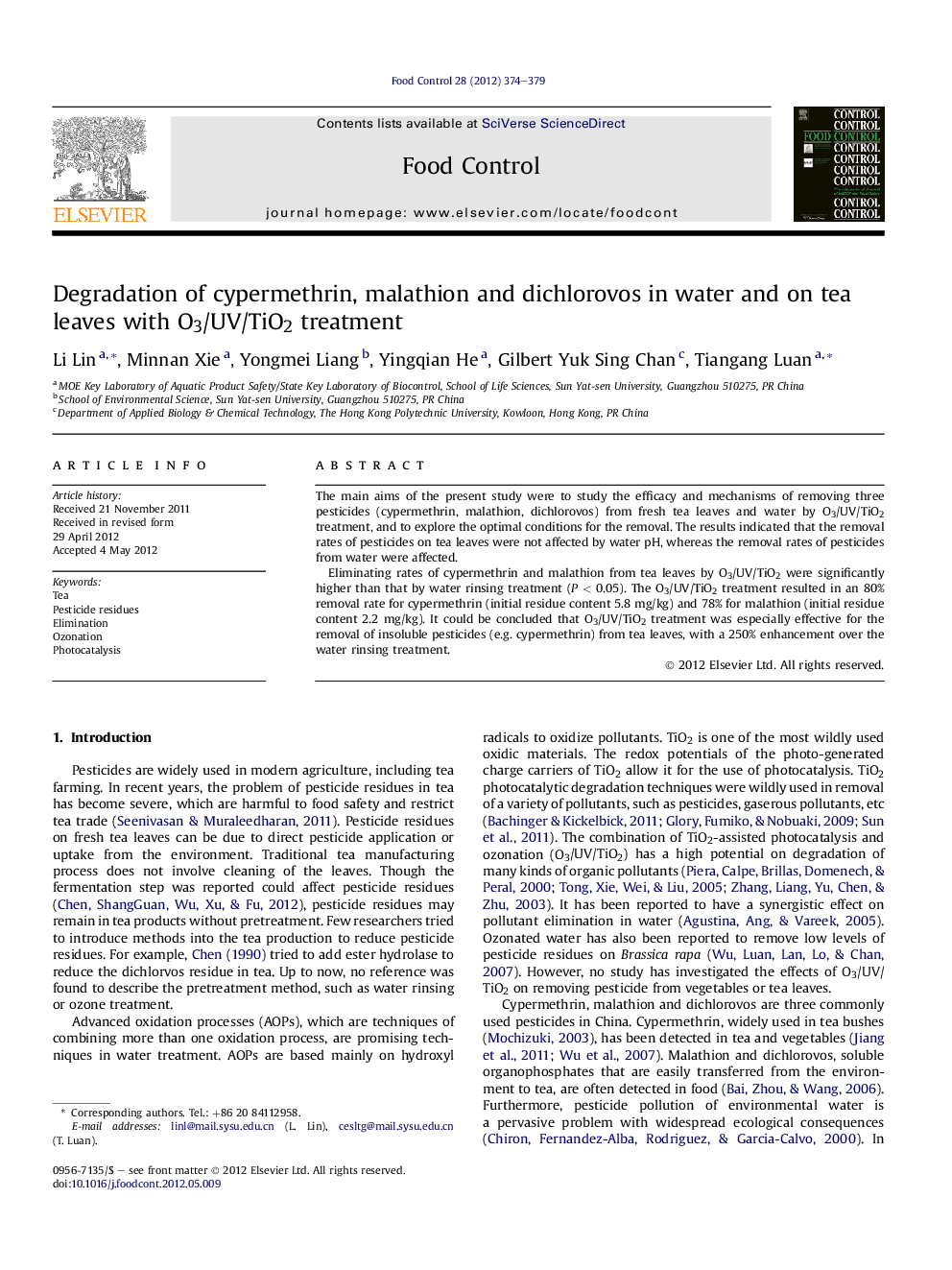| Article ID | Journal | Published Year | Pages | File Type |
|---|---|---|---|---|
| 6394350 | Food Control | 2012 | 6 Pages |
The main aims of the present study were to study the efficacy and mechanisms of removing three pesticides (cypermethrin, malathion, dichlorovos) from fresh tea leaves and water by O3/UV/TiO2 treatment, and to explore the optimal conditions for the removal. The results indicated that the removal rates of pesticides on tea leaves were not affected by water pH, whereas the removal rates of pesticides from water were affected.Eliminating rates of cypermethrin and malathion from tea leaves by O3/UV/TiO2 were significantly higher than that by water rinsing treatment (PÂ <Â 0.05). The O3/UV/TiO2 treatment resulted in an 80% removal rate for cypermethrin (initial residue content 5.8Â mg/kg) and 78% for malathion (initial residue content 2.2Â mg/kg). It could be concluded that O3/UV/TiO2 treatment was especially effective for the removal of insoluble pesticides (e.g. cypermethrin) from tea leaves, with a 250% enhancement over the water rinsing treatment.
⺠Efficiency of O3/UV/TiO2 on pesticide removal from tea leaves and water was studied. ⺠Removal rates on tea leaves by O3/UV/TiO2 were higher than by water striping. ⺠Pesticide removal by O3/UV/TiO2 in water is affected by pH. ⺠Pesticide removal rates by O3/UV/TiO2 on tea leaves were not affected by water pH. ⺠O3/UV/TiO2 was especially effective for insoluble pesticides removal from tea leaves.
